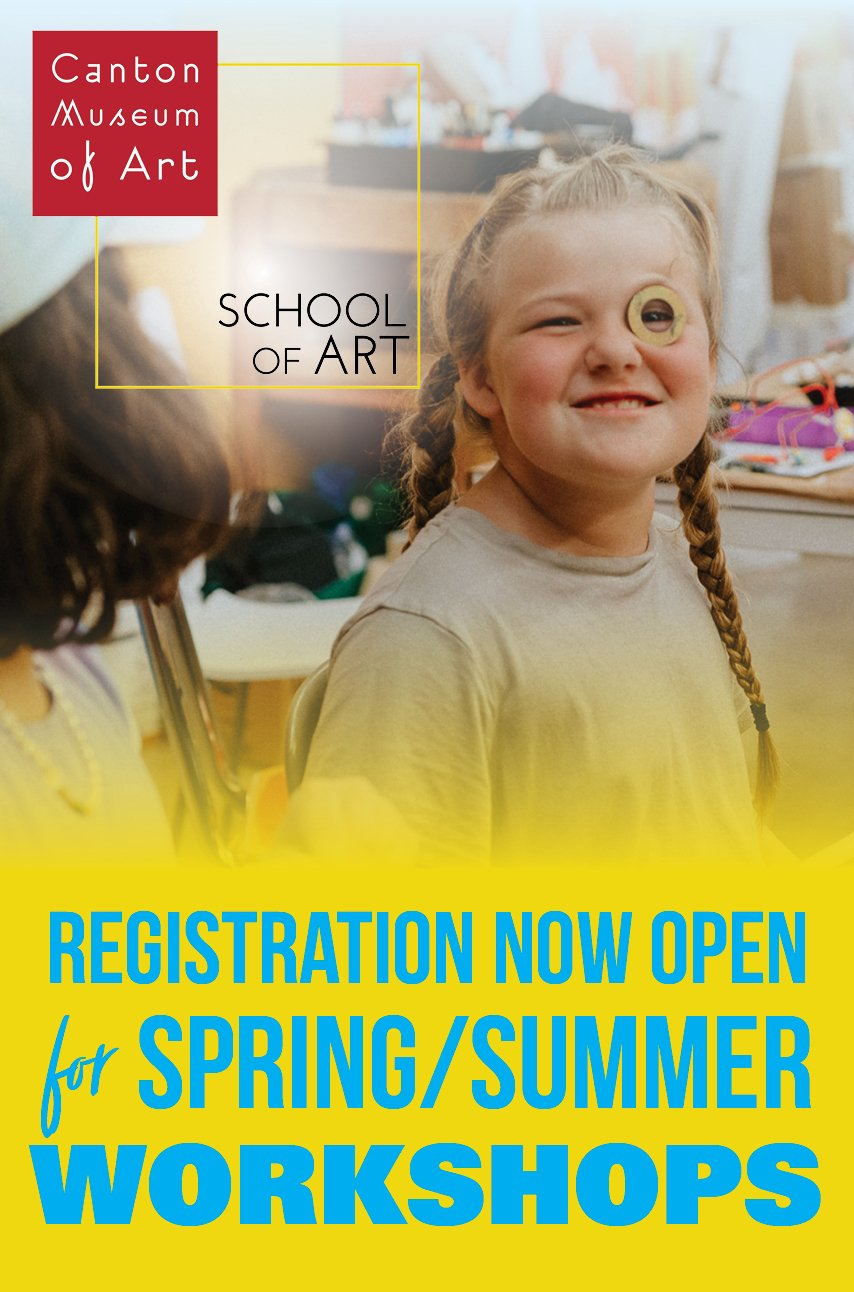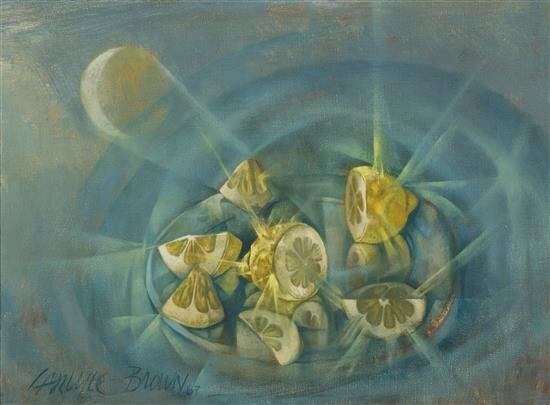Carlyle Brown • American: 1919-1963
Lemon, Glass and Knife C: 1957 • Oil on Linen 15” x 21 5/8”
The simple stone slabs bearing Christian crosses lie in Campo Cestio cemetery in Rome. Carlyle Brown and Margery Hulett traveled a road lined with Fools Gold to get there. They were a glittering couple on the international party circuit. His rare painting talent and her aristocratic beauty helped them conquer high society until the day he strayed to another man and it all crashed to the ground.
Travel back to the war years: While other sailors wrote letters home, Carlyle Brown struck up an intense correspondence with Russian painter Pavel Tchelitchew who immigrated to America just before the war began. After war’s end Brown came to New York where he dove into the art scene headfirst. He immersed himself in Tchelitchew’s circle of sophisticated friends, including musician Leonard Bernstein, poet W.H. Auden and painters Corrado Cagli and Morris Graves. It was a glittering gathering of talent that mixed well with New York’s well-heeled philanthropists to form what became known as Café Society.
In New York, Brown reconnected with Margery Hulett whom he’d met while recruiting for the Navy in Indiana. She had become a Vogue fashion model.
(story continues below break)





















